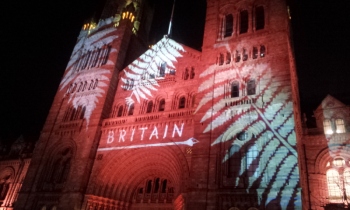As she was finishing her doctoral work at York, Dr Nick Ashton contacted Sarah to ask if she would be available to record, what was described over the phone as, intertidal landscape features at Happisburgh in Norfolk. Privileged to have been asked to visit the site and collaborate on the project, it was clear on the day of her visit that the team had made an exciting discovery which disappeared within only weeks after it had been uncovered by the tide. Over the course of one very wet afternoon, Dr Duffy photographed the ephemeral features using a photogrammetric capture approach and later processed the images using specialized software in order to to generate 3D models.

Although weather conditions on the day of recording were less than optimal and the tidal restrictions made image capture somewhat challenging, the technique proved successful. The digital outputs were analyzed by the rest of the research team that included Nick Ashton, Chris Stringer, Isabelle DeGroote, Simon Lewis, Martin Bates, Peter Hoare, Sylvia Peglar, and Craig Williams. In 2015, this project won Current Archaeology’s prize for Rescue Archaeology Project of the Year.
 Coverage of the footprints was part of the Natural History Museum exhibit Britain: One Million Years of the Human Story. (The exhibit includes other work Dr Duffy completed as part of the Ice Age Island Project in addition to a 3D printout of one of the footprint models.) The story was also covered widely in the media (e.g. BBC, New York Times, & British Archaeology.)
Coverage of the footprints was part of the Natural History Museum exhibit Britain: One Million Years of the Human Story. (The exhibit includes other work Dr Duffy completed as part of the Ice Age Island Project in addition to a 3D printout of one of the footprint models.) The story was also covered widely in the media (e.g. BBC, New York Times, & British Archaeology.)
(see Ashton, N, Lewis, S, DeGroote, I, Duffy, S M , Bates, M, Bates, R Hoare, P, Lewis, Parfitt, S, Peglar, S, Williams, C, Stringer, C . (2014) Hominin ‘Footprints from Early Pleistocene Deposits at Happisburgh, UK’ in PLOS ONE, UK. PLoS ONE 9(2): e88329.)
VIRTUAL RTI
Since completing the original survey, Sarah has been incorporating the models generated from the fieldwork into the RTI processing workflow in order to produce models which can be virtually lit to reveal even more information about the prints.
The resulting Virtual RTIs further highlight the form of the features.